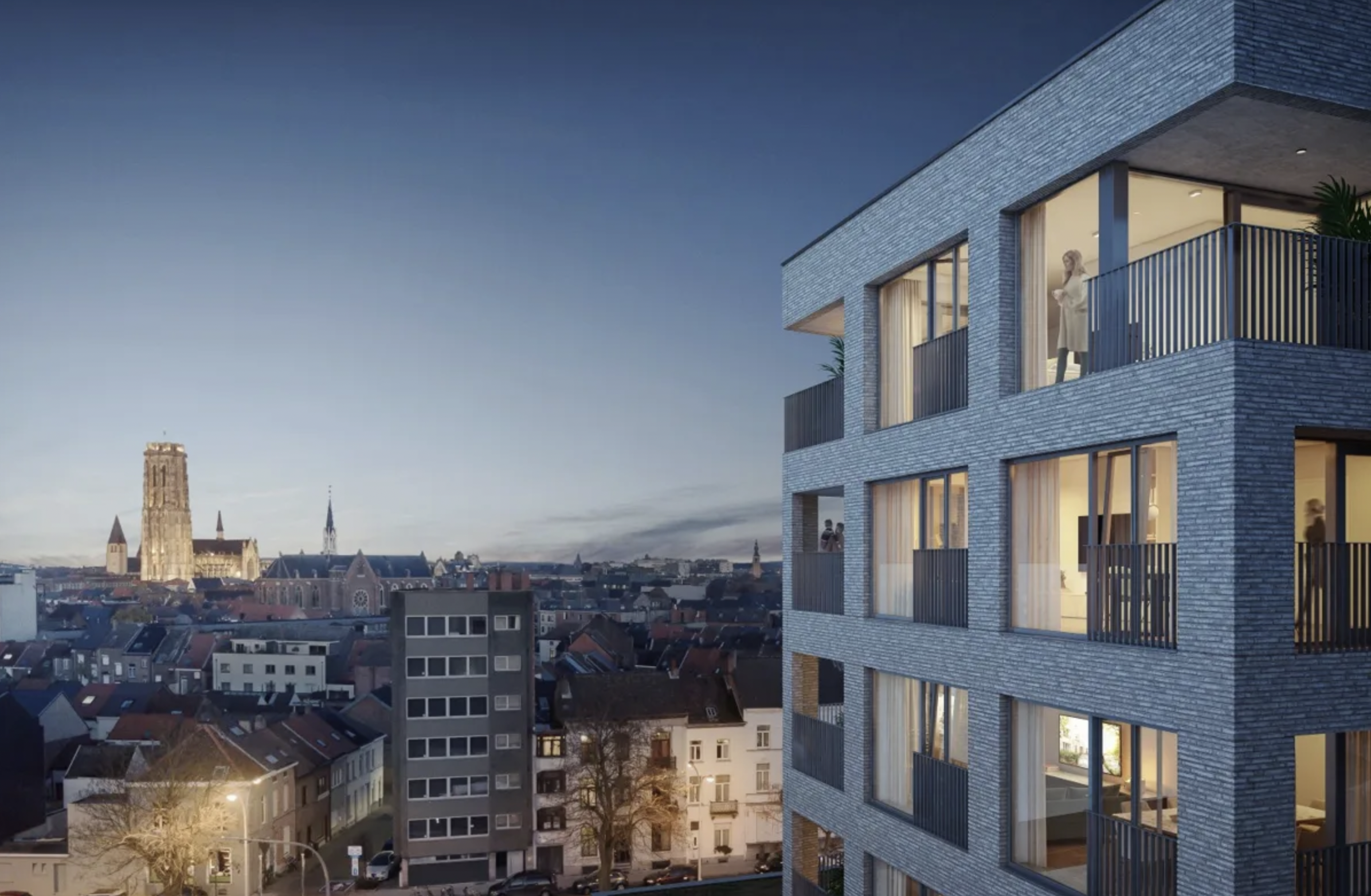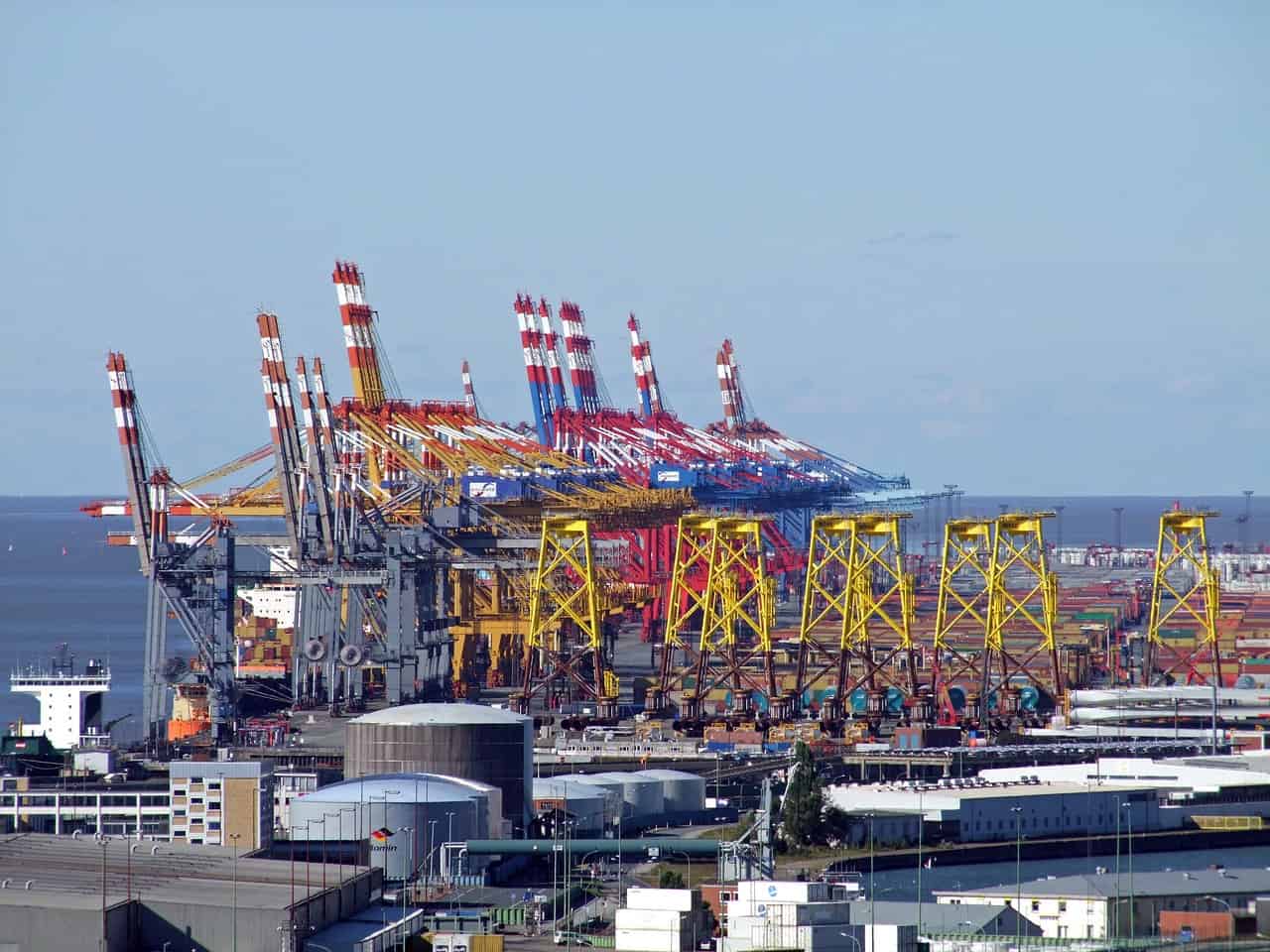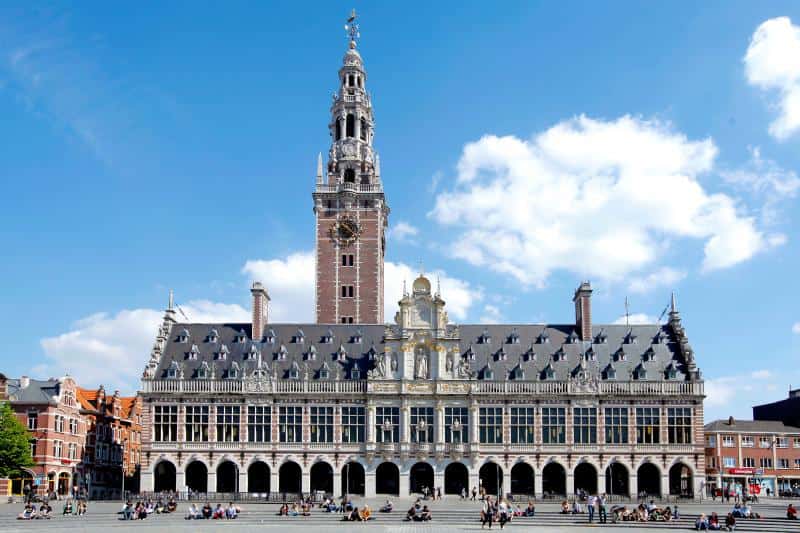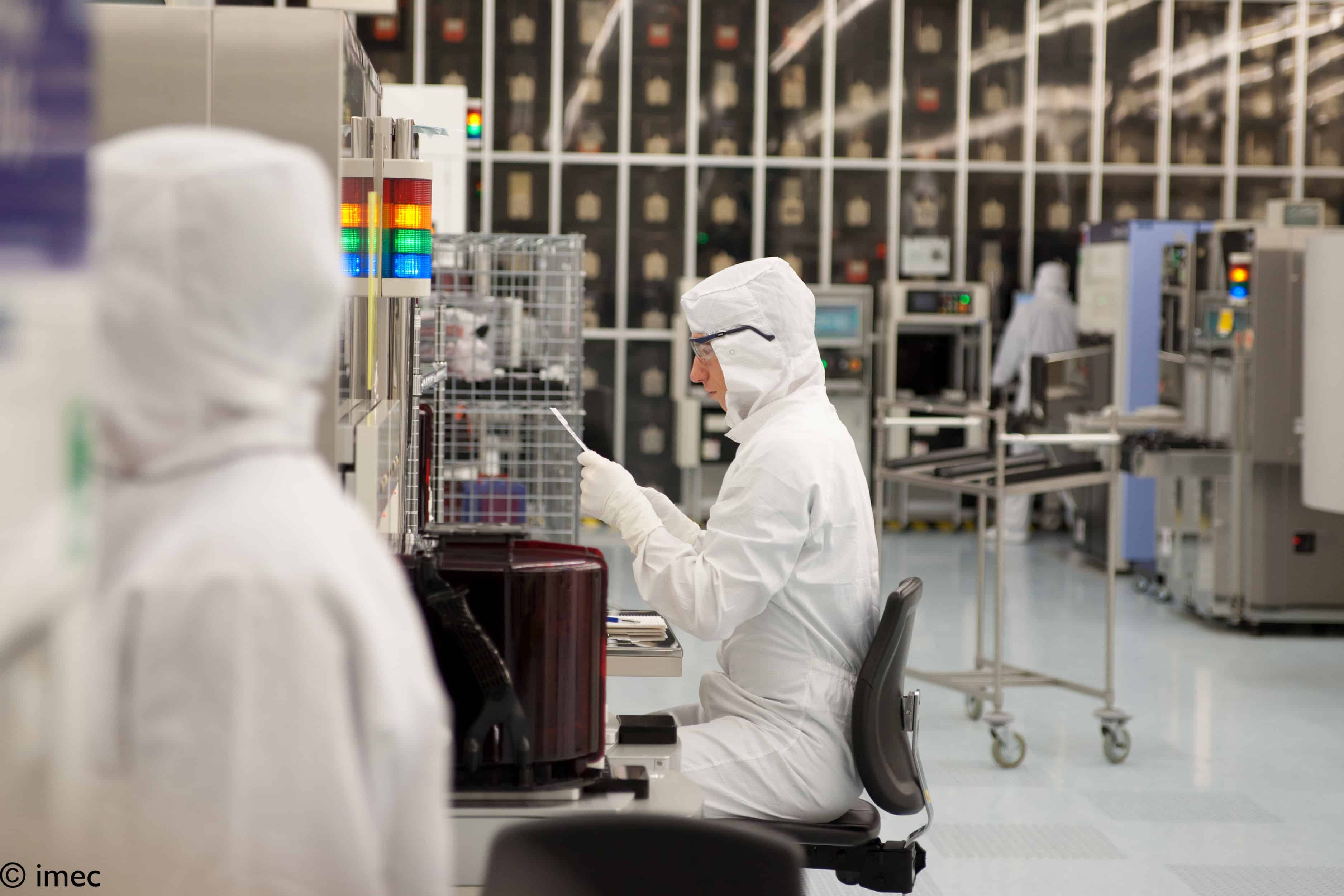
The construction sector in Belgium is rapidly becoming more sustainable. Contractors are increasingly opting for circular concrete and sustainable timber. In Mechelen, a large housing project is being built with circular concrete. In the European quarter in Brussels, the construction of the highest hybrid building (wood-steel-concrete) of the Brussels Region has started. Environmental associations are applauding these circular projects, although they are also voicing some criticism. A lot still needs to be done. And then there is the problem of a shortage of granulate to make green concrete.
The circular concrete, comprising recycled concrete aggregates, is now also available with the official BENOR quality assurance guarantee for structural work, which makes it widely applicable from now on. The first buildings with recycled concrete aggregates are now under construction in Mechelen (Belgium). The houses in the Komet neighborhood will soon be made up of green concrete for 30%. This means that 1,500 tonnes of natural aggregates to be spared. Yet there are other environmental benefits too.
Also read: Building with wood: ‘Kapla for adults’
“By doing this, we also avoid having to drive 50 large trucks from the quarries in Wallonia to the Mechelen construction site. That cuts out 7,500 kilometers of heavily loaded transport,” says Alexandre Huyghe, CEO of the real estate developer Revive. “Thanks to the project, the construction and demolition waste heap in our country is also being reduced. We are doing all this without compromising on the quality or strength of the concrete.”
According to the VK Architects & Engineers design and engineering firm, the use of circular concrete was a logical choice. “As a research and study agency with a focus on sustainability, it made sense for us to use green concrete for the Komet project,” says Koen Feyaerts, Project Engineer C&S.

“This for us is mainly a matter of taking responsibility. After all, our business, the construction industry, is responsible for 50% of all raw materials mined by people. Moreover, we also produce 30% of all waste, with concrete waste being the main culprit in particular. So, it is simply our duty to do something about that, by trying to minimize the amount of demolition waste.”
Approval
In recent years, a few construction projects where circular concrete has been used have already sprung up here and there in Belgium. However, there was always one key problem: for each project, the recycled concrete had to be tested and approved each time anew. That laborious and time-consuming procedure can now be consigned to the bin thanks to the general certification scheme. The Mechelen-based producer Jacobs Beton was one of the first in our country to receive the general Benor approval for the production of circular or green concrete from the Be-Cert certification authority.
Kurt Jacobs, director of Jacobs Beton: ” In concrete terms, the certification means that from now on our circular concrete is no longer tied to one specific construction project. Our country can at long last start using circular concrete on an industrial scale. Meanwhile, the green concrete has also proven its worth in comparison to standard concrete. In terms of sturdiness, ease of use and material durability, it is on a par with the traditional alternatives.”

Pascale De Kesel, certification expert at BE-CERT: “Naturally, we will continue to follow this evolution over the long term. We want to use it to promote ecologically sustainable construction, without making any concessions to the quality assurance aspect.” At present, BE-CERT has a total of five concrete plants that have received a certificate in the RS (Standard Concrete) category and three plants that have received a certificate in the RD (Sustainable Concrete) category.
Circular concrete
Jacobs Beton has been working on the process of making circular concrete for 14 years. This involves 20% to 30% high-grade concrete aggregates. “We have invested in a new processing plant that enables us to guarantee the required production quantities as well as the quality of the aggregate,” says Kurt Jacobs. “An important condition for the circular concrete was to demonstrate that it was on a par with traditional concrete. It also helps to cut down on transportation trips. On an annual basis, we are going to make 20,000 tonnes of high-grade concrete aggregates. That means a reduction of 700 trucks a year on our already congested roads. After all, they no longer have to drive to the quarries. I’m really satisfied that with this project, we will have made the concrete sector greener. The concrete sector was the only sector where the concept of circularity was not yet in effect. Although I realize that cement in concrete still poses a challenge. After all, cement is responsible for 80% of concrete’s CO2 footprint.”
Challenges
According to Peter De Vylder, director of the Belgian Concrete Federation FEDBETON, there are still plenty of challenges, not least for the cement industry. “Cement is not the cleanest industry. Just be aware that CO2 emissions in cement production have been reduced by 35 % in recent decades, and it set to drop even further. In fact, by 2050, cement will have to be produced CO2-free. All of the parties involved are currently working hard to meet this target. Another major challenge is to be able to source enough recycled material. Currently, there is not enough high-grade recycled granulate available.”
According to Willy Goossens of the Federation of Producers of Recycling Granules NPO, 17 million tonnes of granules are already being recycled each year in Flanders. This is mostly used in the foundations of roads. “As such, there are not enough high-grade recycled concrete aggregates available for green concrete,” says Goossens. “We are expecting an increase. But we won’t get past 20 million tonnes a year.”
The more local, the better
The Brussels urban movement BRAL, a Belgian environmental organization working for a more sustainable Brussels Capital Region, welcomes the fact that the use of recycled concrete is being encouraged in Belgium. “The more local the concrete production, the better,” says Marie Coûteaux, urban planning expert at BRAL. “Concrete recycling is still too rare at present and we have got to promote it, also in Brussels. Yet: the greenest building is the one that already exists. So try to think beyond simply demolishing the buildings and reusing the materials. First and foremost, try to give an existing building a longer life.”
Also read: Intelligent wood could become the urban construction material of the future
VIBE, a non-profit organization that is putting regenerative design and construction on the map in Belgium, thinks that trying to deal with concrete in a circular way is a very good thing. “Except that the biggest problem of CO2 emissions resides in the cement industry,” says Yara Helsen, content officer at VIBE. “Reusing concrete aggregates is already a step in the right direction, but there are still a lot of processes and materials that are needed to achieve the result you want. Moreover, concrete is and will always remain a wet material, which means that it won’t be possible to reuse it on a one-on-one basis in the future. At the start of a (re)building project, you have to keep practicing which materials can be reused and which new materials are going to be used.”
Sustainable alternatives
The Bond Beter Leefmilieu (Society for a Better Living Environment, BBL) also agrees that it is a good thing that more sustainable alternatives to concrete are being developed. “But an equally important question is whether we really need so much concrete. The risk is if concrete is seen as a circular building material, the impulse to think fundamentally about whether you need so much concrete in housing tends to disappear, and even more fundamentally: whether building needs to take place in the first place. It is therefore always good to maintain a broader perspective, and to utilze innovations such as these in places where they can really make a difference. In the projects mentioned above, that seems to be the case. It is just as interesting to look at alternatives – such as high-rise timber buildings – or to opt for spatial densification so that transportation costs and building materials can be spared. Sustainable construction is an integral story. Whether a material is sustainable depends not just on the material itself, but where and how it is being used. It is often a complex puzzle.”

Timber construction
Apart from concrete, there are indeed other circular building methods, such as timber construction. Timber construction is on the rise in Belgium. Designer, developer and contractor Wood Shapers has partnered with the BPC construction company on the Monteco project, in the heart of the European quarter in Brussels. The office project will be an eight-storey timber structure. Nevertheless, the core is still in concrete and the skeleton of the building will be built out of wood. Sustainable wood that bears the PEFC label was used, sourced from a radius of up to 500 kilometers around the site. “Our focus extends beyond wood alone,” says Jorgen Bornauw, CEO of Wood Shapers.
“We look for the best and most durable material at the best place. A traditional building is built for 90% on a construction site. We do more prefabrication, in such a way that it only needs to be assembled on site. You no longer have to deal with drying times, so the building can be finished faster. This has advantages in terms of quality and safety and in the reduction of failure costs. After demolition, the wood can be reused, also for other applications, such as furniture.”
Forest management
Construction with timber is also good for the environment, according to Bornauw. “A tree captures CO₂ during the first half of its life. The CO₂ remains trapped in the tree. Only when the tree starts to decay does it start to emit CO₂. If you fail to cut down a tree in time, it is also bad for the climate. Then the tree starts to emit the stored CO₂. If trees are felled in time – before the start of the degradation process – the CO₂ then remains stored in the wood. It is important to practice sustainable forest management. Our buildings are basically CO₂ banks so that means you are able to build CO₂-negative. In all other building materials, such as concrete, steel, cement, etc., you do need to use a lot of processes that emit CO₂. Circular concrete only concerns the reuse of the aggregates. Cement and concrete create CO₂.”
Cover photo: Artist impression Komet-wijk in Mechelen. (courtesy of Bereal.be)








